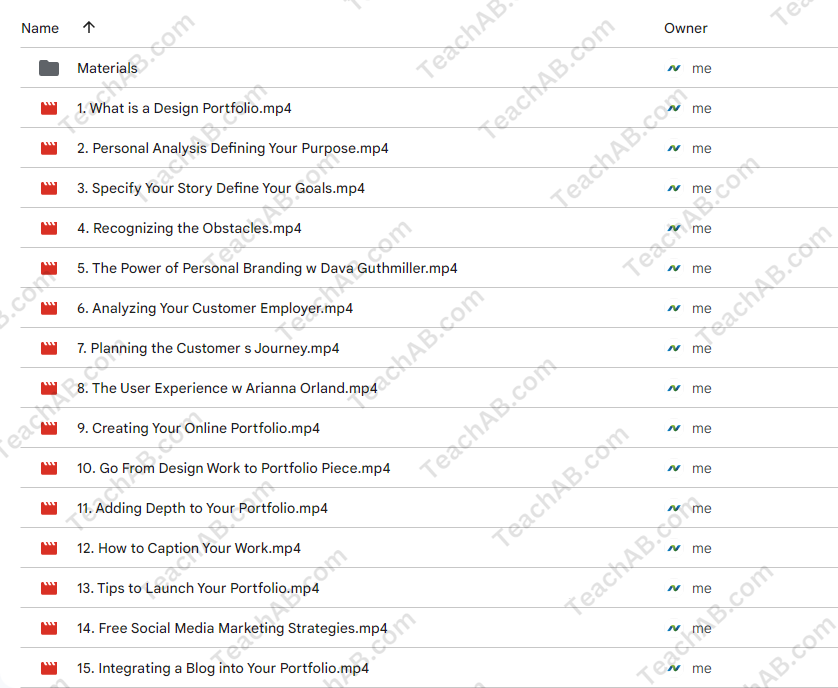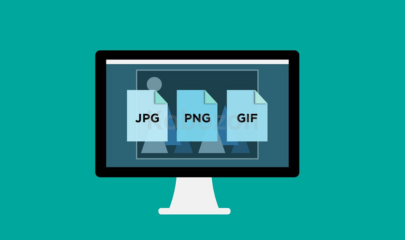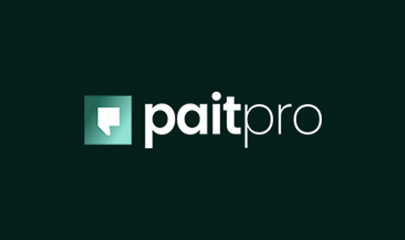Create a Knockout Graphic Design Portfolio By Ram Castillo
$24,00 $5,00
Create a knockout graphic design portfolio – Instant Download!
Let’s embark on a captivating adventure to uncover remarkable insights that spark your curiosity and elevate your understanding

Create a Knockout Graphic Design Portfolio By Ram Castillo
Overview

Create a knockout graphic design portfolio
In today’s competitive design industry, standing out often hinges on one vital tool: your portfolio. It’s the gateway through which potential clients and employers catch their first glimpse of your talent, creativity, and personal story. A compelling portfolio doesn’t simply display your work; it tells your unique narrative and connects with the audience on a deeper level. “Create a Knockout Graphic Design Portfolio” by Ram Castillo is a thorough educational resource aimed at emerging and established designers alike, guiding them through the intricate process of crafting an impactful portfolio. In an age where visual impact is paramount, Castillo’s teachings inject life into the portfolio creation process, shaping projects into storytelling platforms that not only showcase skills but also reflect personal values and inspirations.
The Significance of a Well-Structured Portfolio
A portfolio is more than just a collection of your works it’s your visual resume. Castillo emphasizes that a well-organized and visually striking portfolio is crucial in capturing the interest of potential clients and employers. Much like an artist carefully curates their exhibition, a designer must thoughtfully present their work. This begins with organization; the thoughtful arrangement of projects can guide viewers through your design evolution. The course unpacks the techniques to best structure a portfolio so that it flows intuitively for the viewer, fostering a seamless experience.
The importance of storytelling in a portfolio cannot be overstated. Castillo encourages designers not just to showcase their completed projects but to delve into the narratives behind each piece. Just like a good novel or movie, a portfolio tells a story one that illuminates the creative journey, challenges faced, and solutions devised. This storytelling approach helps create a personal bond with the audience, making the designer’s work resonate on a much deeper level. By inviting viewers into this narrative, designers can foster a greater emotional connection, stimulating curiosity and interest.
One might wonder how effective organization and storytelling elements can translate into real-world impact. Research indicates that portfolios with strong narrative components engage viewers longer they linger over elements, absorbing the context and emotions entwined with the work. Let’s consider some practical aspects:
- Organization Strategies:
- Start with your strongest work for immediate impact.
- Group similar projects to highlight versatility.
- Include descriptions that clarify your role and the project outcomes.
- Storytelling Techniques:
- Share a brief narrative for each piece.
- Discuss challenges you faced and how you overcame them.
- Reflect on the inspirations behind designs to create a deeper connection.
Navigating the Creative Journey: Questions to Consider
What does it take to transform a collection of designs into a cohesive body of work? Castillo’s course prompts participants to engage in self-reflection and consider fundamental questions. These inquiries lead designers to excavate deeper motivations, inspirations, and design philosophies that inform their work. Such insights are critical in crafting a personalized portfolio that stands out.
- Questions to Guide Your Portfolio Development:
- What themes recur in your work?
- How have your experiences informed your design approach?
- What values do you want to convey through your designs?
Understanding these core aspects should not be perceived merely as an exercise; they are the bedrock of a designer’s identity and brand expression. Just as an architect outlines the principles behind their structures, designers must articulate their personal design philosophies. This thoughtful process allows designers to communicate their unique value propositions effectively.
In practical terms, Castillo provides frameworks to analyze and synthesize design principles as they relate to the individual designer’s style. This information will aid in creating narratives that highlight personal touchpoints that resonate with audience experiences, leading to a more captivating portfolio. Moreover, utilizing visual metaphors can enhance presentation. A designer might compare their style evolution to a tree’s growth rooted in foundational techniques, branching out into various styles while still remaining anchored to core values.
Avoiding Common Pitfalls in Portfolio Creation
Creating a compelling portfolio, while critical, can be wrought with challenges. Castillo’s course sheds light on common pitfalls and provides practical solutions. Designers often fall into the trap of overloading their portfolios with too many projects or showcasing pieces that do not align with their intended brand. This can dilute their unique style and confuse potential employers.
- Common Pitfalls:
- Over Saturation: Including too many projects can overwhelm viewers. Instead, focus on quality over quantity.
- Inconsistent Style: Showcasing a random selection of styles can indicate a lack of direction. Maintain a consistent theme that reflects your personal aesthetic.
- Neglecting Personal Insight: Failing to include the rationale behind your designs can make your portfolio forgettable. Provide context to each piece to reinforce emotional engagement.
To navigate these obstacles, Castillo offers actionable strategies:
- Curate Your Best Work: Limit your portfolio to the most impressive pieces that truly reflect your skills. A curated collection is far more impactful than a disorganized pile.
- Reflect Your Brand: Consistently use your color palette, typography, and styles throughout your projects. This creates a cohesive look and feel, presenting a clear image of your brand.
- Incorporate Feedback: Regularly gather insights from peers and mentors. Constructive feedback can illuminate blind spots and vastly improve your portfolio’s quality.
Asset Creation: Crafting a Personal Brand
In the expansive field of graphic design, establishing a personal brand is essential for lasting success. Castillo underscores the importance of crafting a portfolio that not only showcases work but builds an authorial voice. This voice emerges through the consistent application of design principles that resonate with personal values, interests, and target audiences.
- Elements to Develop a Personal Brand:
- Unique Voice: Choose styles and themes that resonate with your personality. Your portfolio should be an extension of who you are as a designer.
- Consistent Visual Style: Just as renowned brands have signature designs, your portfolio should exhibit a recognizable visual style.
- Authentic Presentation: Be genuine emphasizing authenticity invites a stronger connection with the audience.
As an illustration, consider the brand identities of successful firms. For instance, Apple’s design language conveys simplicity and innovation, while Coca-Cola resonates with nostalgia and familiarity. Each of these brands has carefully curated a visual and narrative style that reinforces their core message. Thus, designers crafting their portfolios should engage in similar efforts, allowing their work to clearly communicate their unique essence.
By focusing on these principles, designers can create a knockout portfolio that not only demonstrates their skill but also speaks to their personal creativity. This, in turn, positions them favorably within the landscape of graphic design.
Final Thoughts: The Impact of a Compelling Portfolio
In conclusion, “Create a Knockout Graphic Design Portfolio” by Ram Castillo serves as an invaluable resource for both burgeoning and seasoned designers. Through its detailed and structured approach, the course encourages participants to embrace their unique stories while presenting their work. Castillo’s extensive background, which includes collaborations with industry titans like Audi, Coca-Cola, and Google, enriches the course content with practical insights that elevate a designer’s understanding of effective portfolio creation.
Crafting a well-organized and visually striking portfolio is not just a task; it is a journey that intertwines personal development with professional growth. By integrating storytelling into portfolio presentation, designers can create compelling narratives that invite curiosity and emotional engagement, offering a deeper understanding of their work.
Ultimately, investing in mastering the art of portfolio creation positions designers favorably in a overcrowded marketplace, allowing them to knockout competition and make authentic connections within the field. This comprehensive educational course is a significant step forward for anyone wishing to illuminate their creative paths and redefine their professional presence in graphic design.
Frequently Asked Questions:
Innovation in Business Models: We use a group purchase approach that enables users to split expenses and get discounted access to well-liked courses. Despite worries regarding distribution strategies from content creators, this strategy helps people with low incomes.
Legal Aspects to Take into Account: Our operations’ legality entails several intricate considerations. There are no explicit resale restrictions mentioned at the time of purchase, even though we do not have the course developers’ express consent to redistribute their content. This uncertainty gives us the chance to offer reasonably priced instructional materials.
Quality Control: We make certain that every course resource we buy is the exact same as what the authors themselves provide. It’s crucial to realize, nevertheless, that we are not authorized suppliers. Therefore, the following are not included in our offerings: – Live coaching sessions or calls with the course author.
– Entry to groups or portals that are only available to authors.
– Participation in closed forums.
– Straightforward email assistance from the writer or their group.
Our goal is to lower the barrier to education by providing these courses on our own, without the official channels’ premium services. We value your comprehension of our distinct methodology.
Be the first to review “Create a Knockout Graphic Design Portfolio By Ram Castillo” Cancel reply
You must be logged in to post a review.



















Reviews
There are no reviews yet.